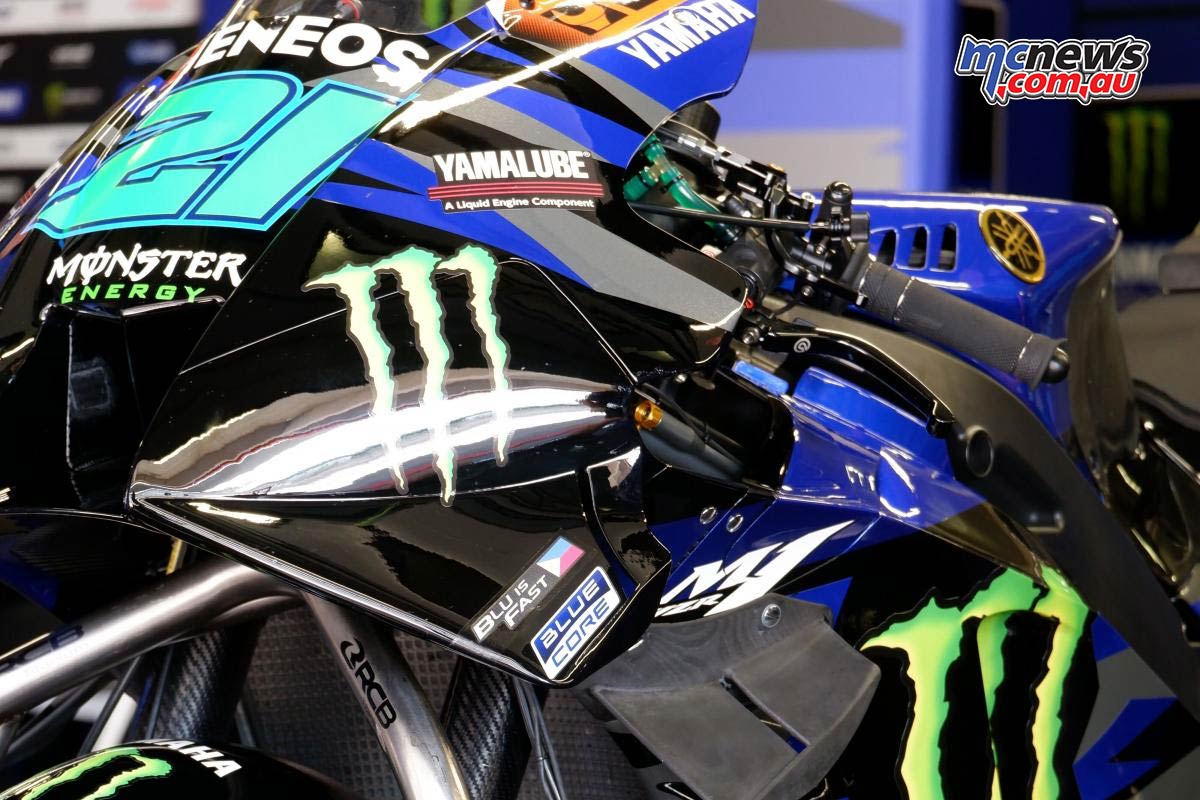+
Less aero
Devices are gone
-
850cc
Less aero
Devices are gone
-
850cc

 www.mcnews.com.au
www.mcnews.com.au
If they plan to regulate peak power with bore limitations, a 15% reduction would correspond with a bore measurement of 75mm. The corresponding stroke would be 48mm, which makes a conservative 1.56 bore-stroke ratio, but this might make the bike less reliant on electronic aids. Current bore-stroke ratio is 1.67
Apart from the change in engine size, this is precisely what I always wished for.
I don't "get" 850cc engines and don't see how decreasing engine sizes can sustainably reduce power.
When MotoGP went to 800cc engines in 2007 it didn't lead to a significant power decrease and when F1 switched from V10s to V8s in 2006 it took less than two years before these engines reached the power of the V10s .
That will depend on octaneHow far has biofuel come?
Does it limit power?
How far has biofuel come?
Does it limit power?
I do agree that the displacement change doesn't make a lot of sense. They are supposedly trying to keep manufacturers involved in MotoGP, now that regulators are putting pressure on ICE transportation. Creating a clean sheet engine formula doesn't strike me as the best way to attract manufacturers who've withdrawn, and the 850cc limit doesn't seem conservative enough to sustain the sport for another 20 years of performance developments. We'll see. Maybe they plan to implement other performance controls if the 850cc engines become prohibitively fast in a straight line.
I think that is because of the past failed experiment that was the 800's.Well, everything seems to be hating on the 850s, without even knowing how they will perform. They said that the bikes were gonna be slower with the 800s, but they ended up being faster during cornering and kept beating all the track records. An 850 with aero will probably be even faster than the 1000cc's with aero. They will be slower on the straights, but will be able to carry more speed in corners and probably brake later aswell. It will be interesting to watch. Hopefully they will still sound like a GP bike and no vegetarian vacuum cleaner.
Me too, I can see them reducing it further as a quick way of limiting performance if the 850's prove to be faster than desired.What lex said. Some people run an ethanol mix in their street cars, and can run more boost and/or more compression because of the higher octane. But it makes engines thirsty, you have to be able to push something like 40% more fuel (if I remember right, ask your tuner!). The other trick is that the ethanol percentage of e85 at the pump in the U.S. actually varies wildly, so you need a fuel sensor to tune it properly, but that won't be a problem in MotoGP. I agree that the major limiting factor will be tank capacity.
Stoner responded: “The ONLY improvement to the current rules is the banning of the ride height and Holeshot device. Nothing else will benefit this sport for the future, only the engineers will get the benefits."
Casey has always been a advocate of going back to raw 500cc 2 strokes with no electronic rider aids. I agree with him in terms of simplyfying the sport, but you and I know that they will never go back to a formula he likes.